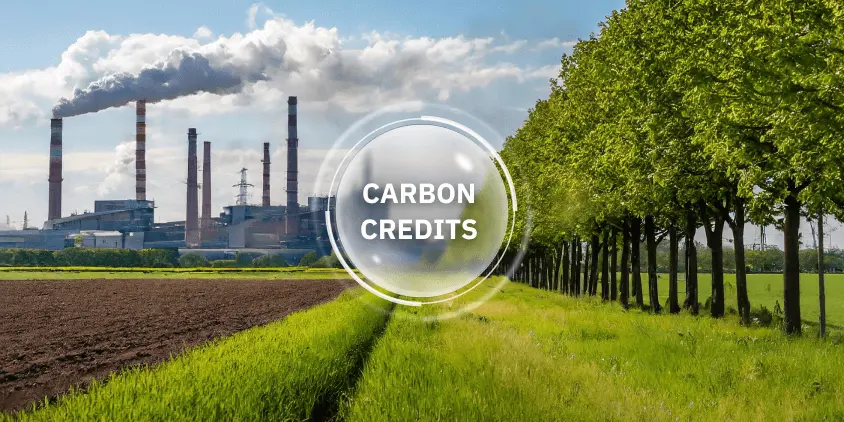A carbon credit is a unit of measurement equivalent to one ton of CO₂ reduced or removed from the atmosphere. It can be generated through projects that help absorb greenhouse gases, such as forest planting and restoration, carbon capture and storage (CCS) projects, or improvements in production processes to reduce emissions. Each carbon credit can be bought and sold on the market as a financial instrument that helps businesses or countries offset their emissions.

This article provides an overview of the key factors that influence the price of carbon credits in trading.
The price of carbon credits in the market is influenced by various factors. Below are the most significant factors affecting the price of carbon credits:
1. Origin of the Credits:
- Credits from compliance markets: Credits issued under compliance systems, such as the European Union Emissions Trading System (EU ETS), typically have higher prices due to mandatory legal requirements.
- Credits from voluntary markets: Credits from voluntary projects tend to be cheaper, but their prices can vary significantly depending on quality and market demand.
2. Quality of the Credits:
- Certification standards: Credits certified by reputable standards such as Gold Standard, VCS, or CDM usually have higher prices as they guarantee quality and transparency.
- Additionality: Credits from projects with clear additionality (i.e., projects that only occur with support from carbon credits) are often priced higher as they ensure that the emission reduction is truly additional.
3. Type of Project and Technology:
- Renewable energy projects: Typically have lower development costs, and credits from such projects tend to be priced lower.
- Forestry and conservation projects: Credits from forestry projects are often priced higher due to their multiple benefits (e.g., biodiversity protection and community livelihoods), but they also face permanence risks.
- Carbon capture and storage (CCS) projects: Credits from high-tech projects like CCS tend to have higher prices due to the costs involved and the sustainability of CO₂ removal.
4. Project Location:
- Geographical region: Credits from projects in different economic and social conditions may be priced differently. For example, projects in developing countries often have lower costs compared to those in developed countries.
- Community benefits: Projects that provide significant community benefits or positive local impacts (e.g., improving livelihoods and protecting the environment) are often priced higher.
5. Supply and Demand:
- Demand from businesses and organizations: When many businesses commit to carbon neutrality and seek to offset their emissions, demand for carbon credits rises, driving up prices.
- Limited supply: If the number of credits issued from high-quality projects is limited, their price will increase.
6. Transparency and Traceability:
- Registration and reporting systems: Credits from projects with transparent monitoring systems and high traceability tend to have higher prices. Buyers are willing to pay more for transparent credits verified by reputable registries.
7. Project-related Risks:
- Permanence risks: Projects that have a risk of CO₂ being re-emitted (e.g., forestry projects vulnerable to fires or deforestation) may have lower-priced credits.
- Political and legal risks: Projects in regions with political or legal instability can affect credit prices due to uncertainty about long-term project stability.
8. International Policies and Regulations:
- Legal regulations: National policies and international regulations, such as the Paris Agreement, can impact credit prices. Stricter regulations and mandatory mechanisms in emissions trading programs increase demand and the price of carbon credits.
- National commitments (NDCs): The level of commitment by countries to reduce emissions through their Nationally Determined Contributions (NDCs) also affects the demand and price of credits.
9. Credit Validity Period:
- Older vs. newer credits: Credits issued in previous years may have lower prices due to the risk of devaluation or because they do not align with the new commitments of businesses.
10. Equity and Co-benefits:
- Credits from projects with additional benefits: Projects that provide social benefits, such as job creation or the protection of indigenous community rights, may have higher prices as buyers are willing to pay more for credits that bring social value.
These factors play a decisive role in determining the price of carbon credits and reflect the true value of CO₂ emission reductions in the market.





